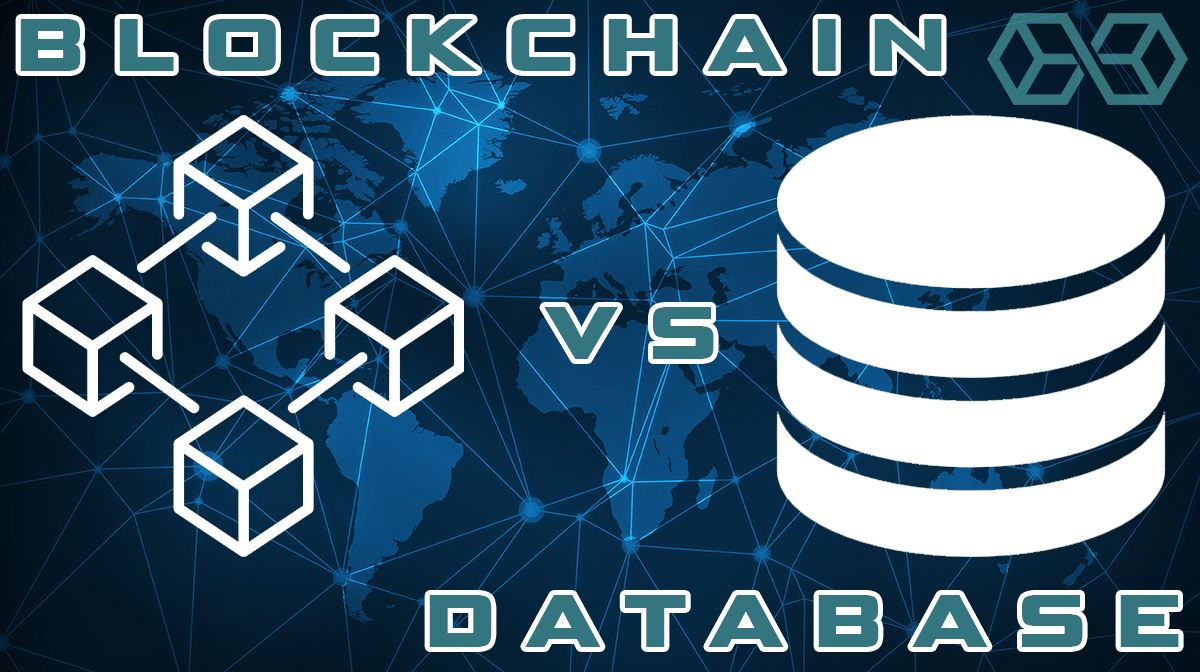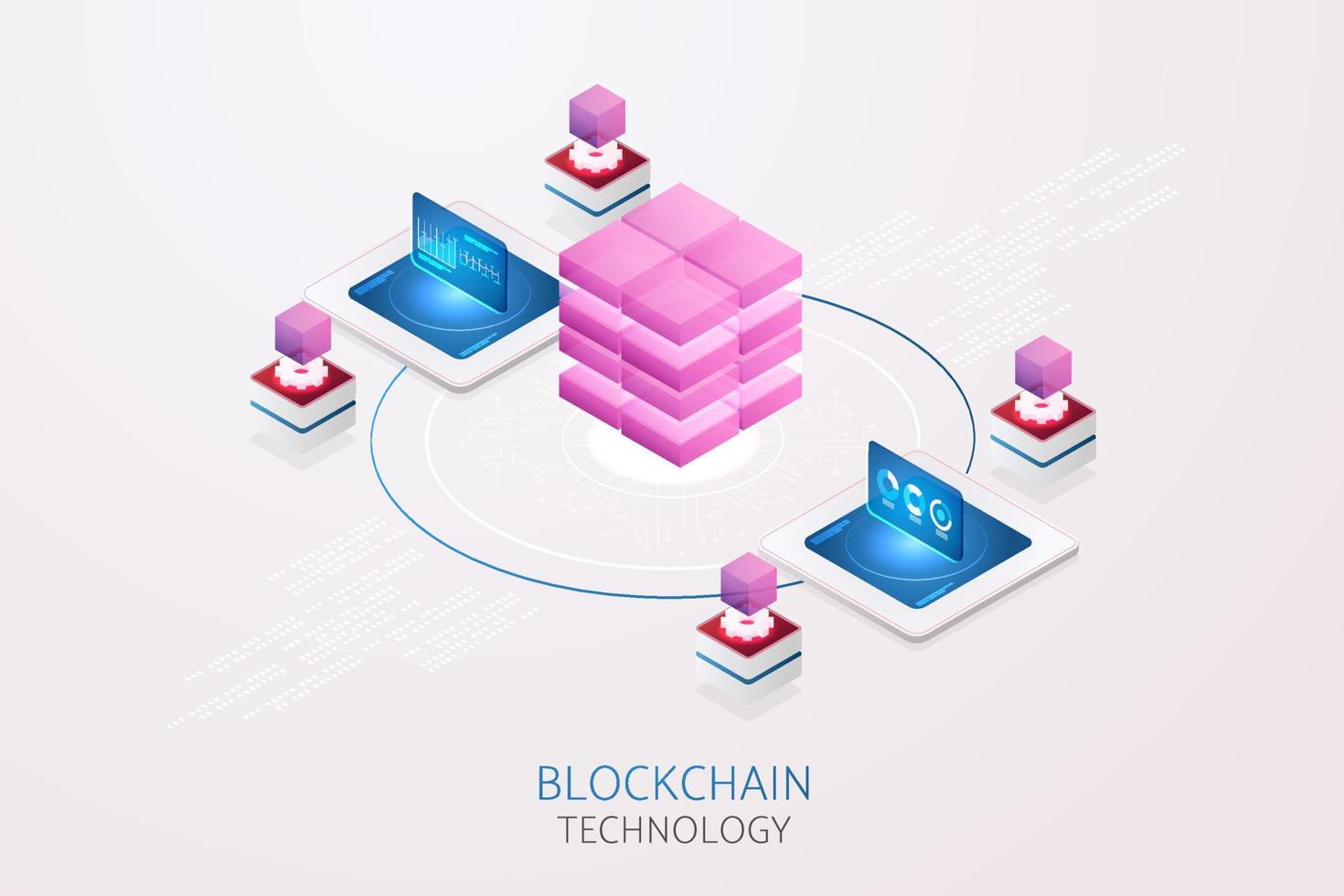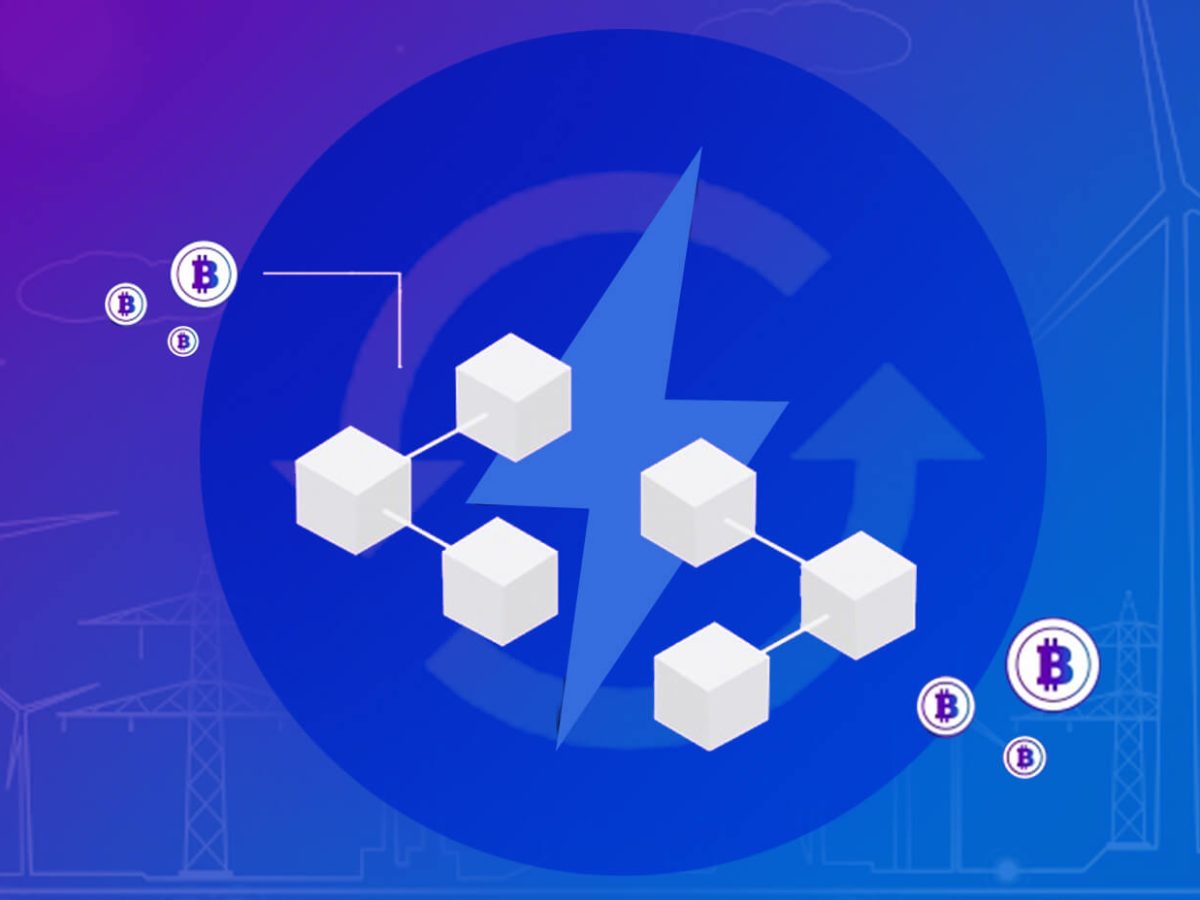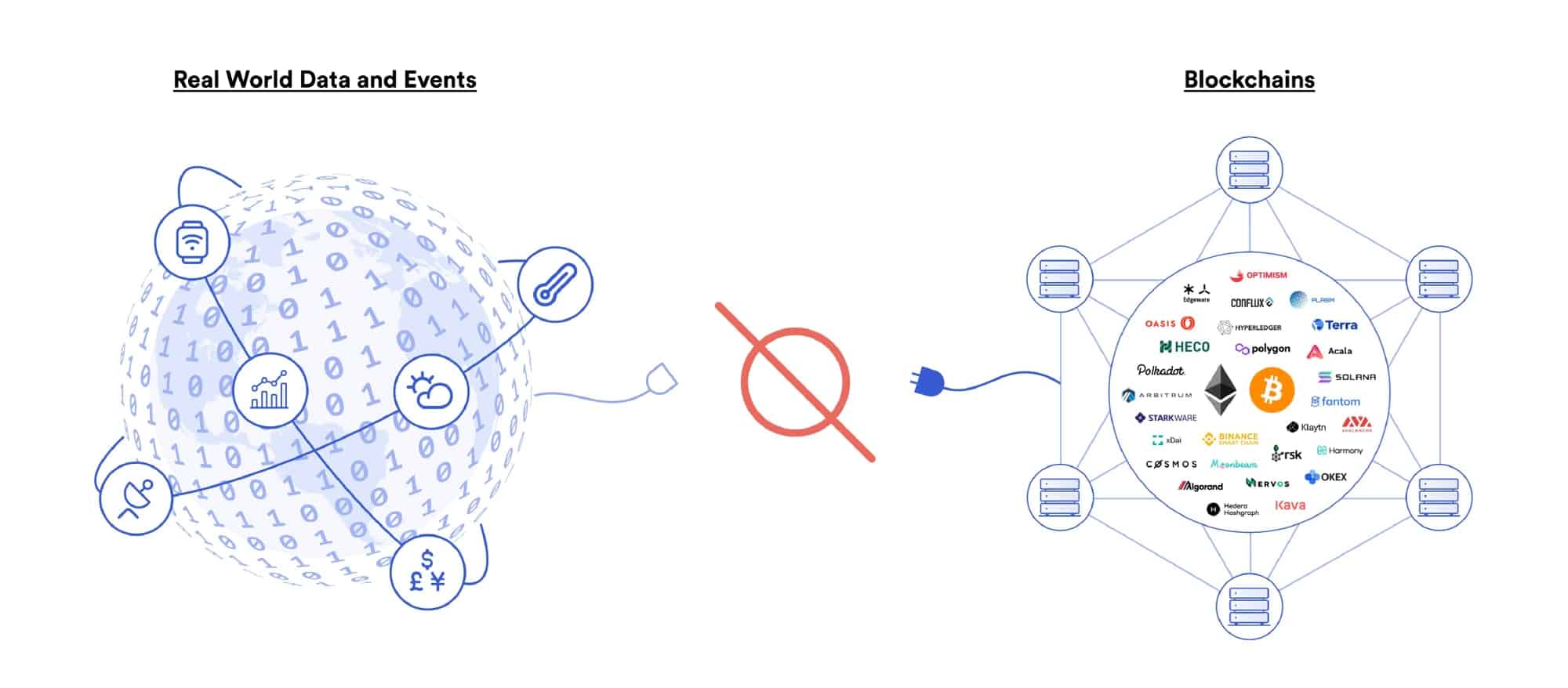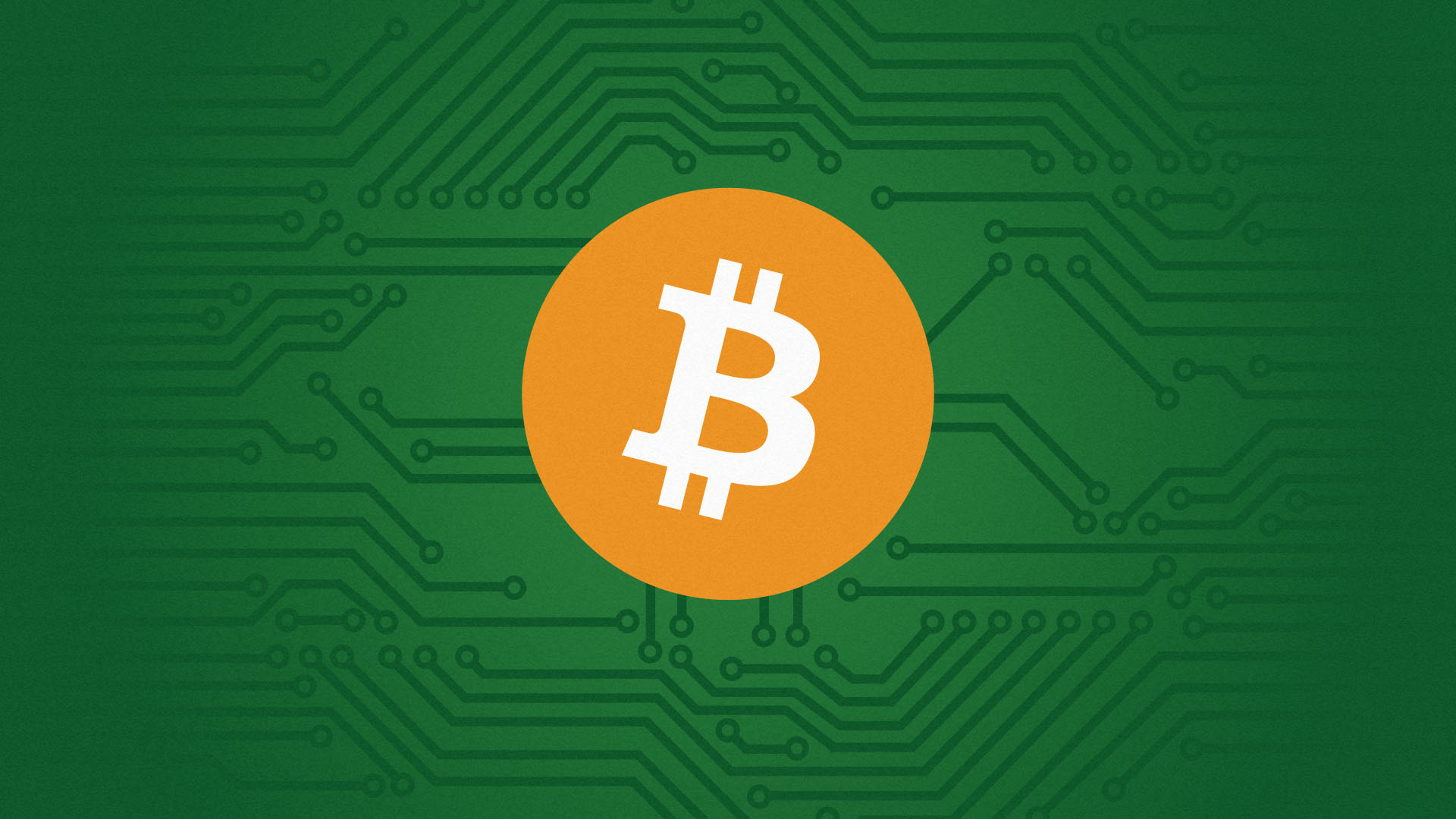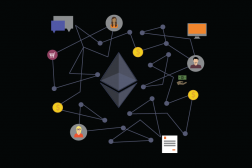Introduction
The advent of technology has revolutionized various aspects of our lives, including how we store and manage data. Two terms that frequently come up in discussions related to data management are blockchain and database. While they may seem similar at first glance, there are fundamental differences between the two.
In this article, we will delve into the distinctions between blockchain and database, highlighting their respective benefits and use cases. By understanding these differences, we can gain a clearer insight into which technology is most suitable for specific applications.
Before we explore the dissimilarities, let’s briefly define blockchain and database.
Blockchain: Blockchain is a decentralized and distributed digital ledger that records information in a secure and transparent manner. It consists of a chain of blocks, each containing data, timestamps, and a unique cryptographic hash. The decentralized nature of blockchain ensures that no single entity has control over the entire network, making it resistant to tampering and censorship.
Database: On the other hand, a database is a structured collection of data that is organized, stored, and managed for easy retrieval and manipulation. Databases can be centralized or distributed, depending on the specific requirements and architecture of the system.
Now that we have defined both technologies, let’s dive deeper into the key differences between blockchain and database.
Definition of Blockchain
Blockchain is a revolutionary technology that has gained significant attention in recent years. At its core, blockchain is a decentralized and distributed digital ledger that securely records data transactions. It operates on a peer-to-peer network, where multiple participants, known as nodes, validate and verify each transaction.
The concept of blockchain is founded on three fundamental principles: transparency, security, and immutability. Transparency is achieved by making the entire transaction history accessible to all participants on the network. Security is ensured through advanced cryptographic algorithms that protect the data and prevent unauthorized modifications. Immutability refers to the inability to alter or tamper with previously recorded transactions, which enhances the trustworthiness of the system.
Blockchain comprises a series of interconnected blocks, where each block contains a set of data, a timestamp, and a unique cryptographic hash. The data stored in these blocks can vary, ranging from financial transactions to digital assets, supply chain information, medical records, and more. Each block is linked to the previous block through the use of cryptographic hashes, creating a chain of blocks, hence the name “blockchain”.
One of the defining features of blockchain is its decentralized nature. Traditional databases typically rely on a central authority or server to manage and validate transactions. In contrast, blockchain eliminates the need for a central authority by distributing the validation process across multiple nodes in the network. This decentralization increases the security and resilience of the system, as it becomes more resistant to attacks and single points of failure.
Furthermore, blockchain incorporates a consensus mechanism to ensure agreement among network participants. Common consensus mechanisms include Proof of Work (PoW) and Proof of Stake (PoS), which require nodes to solve complex mathematical problems or hold a certain amount of cryptocurrency as a form of validation. These mechanisms prevent malicious actors from manipulating the data and provide a fair and reliable way to reach consensus.
The application of blockchain technology extends far beyond cryptocurrencies like Bitcoin. It has the potential to revolutionize various industries, such as supply chain management, healthcare, finance, real estate, and more. By offering increased transparency, security, and efficiency, blockchain has the capacity to transform how we store, manage, and share data.
Definition of Database
A database is a structured collection of data that is organized, stored, and managed for efficient retrieval and manipulation. It is a software system that allows users to store and retrieve data in a structured format, using a set of predefined rules and relationships.
One of the key characteristics of a database is its ability to store vast amounts of data in a structured manner. Data in a database is organized into tables, which consist of rows (records) and columns (attributes). Each row represents a unique entity, while each column represents a specific piece of information about that entity.
There are different types of databases, including relational databases, object databases, hierarchical databases, and more. Relational databases, such as MySQL, Oracle, and SQL Server, are the most commonly used. They store data in tables with predefined relationships between them, facilitating efficient data retrieval and manipulation through structured query languages like SQL.
Databases can be centralized or distributed, depending on the specific requirements of the system. Centralized databases have a single server that manages and controls access to the data. This centralized approach provides simplicity and control but can be a single point of failure. On the other hand, distributed databases distribute the data across multiple servers, providing increased fault tolerance and scalability.
In addition to storing data, databases offer various operations to manipulate and retrieve the stored information. These operations include inserting new data, updating existing data, deleting data, and querying based on specific criteria. Databases also provide features such as indexing, which enhances query performance by creating data structures that enable quick access to specific data subsets.
Security is a critical aspect of database management. Databases enforce access controls and permissions to ensure that only authorized users can perform specific operations on the data. Measures such as user authentication, encryption, and data backups are implemented to safeguard the data from unauthorized access, loss, or corruption.
Databases are widely used in various industries and applications, including e-commerce, banking, healthcare, human resources, and more. They provide a reliable and efficient way to organize, store, and manage large amounts of data, enabling businesses to make data-driven decisions and streamline their operations.
Key Differences
While both blockchain and databases are used for data management, they have several distinct differences in terms of technology, structure, centralization, data manipulation, security, and consensus mechanisms. Understanding these differences is crucial in determining which technology is best suited for specific applications.
Technology: Blockchain technology utilizes a decentralized peer-to-peer network consisting of multiple nodes, while databases often rely on a centralized server architecture. Blockchain employs cryptographic algorithms and distributed consensus mechanisms to ensure data accuracy and security.
Structure: Databases are structured collections of data organized in tables, with predefined relationships between them. In contrast, blockchain arranges data in a chain of blocks, where each block contains a set of data and a cryptographic hash linking it to the previous block.
Centralization vs. Decentralization: Traditional databases are typically centralized, meaning data is stored and managed by a central authority. Blockchain, on the other hand, operates in a decentralized manner, allowing multiple participants to validate and verify transactions without relying on a single entity.
Data Manipulation: Databases provide various operations for data manipulation, such as inserting, updating, deleting, and querying data using structured query languages. Blockchain, however, emphasizes data immutability, making it challenging to modify or delete already recorded transactions.
Security: While databases implement security measures such as access controls, encryption, and backups, blockchain offers inherent security through its decentralized and immutable nature. Transactions stored on the blockchain are cryptographically secured, making it extremely difficult for unauthorized parties to tamper with the data.
Consensus Mechanism: Databases rely on predefined rules and permissions for data validation, often controlled by a central authority. Blockchain, on the other hand, employs consensus mechanisms such as Proof of Work or Proof of Stake to ensure agreement among network participants, preventing malicious activities and allowing for trustless transactions.
Overall, the key differences between blockchain and databases lie in their technology, structure, centralization, data manipulation capabilities, security features, and consensus mechanisms. While databases excel in managing structured data efficiently, blockchain offers unparalleled transparency, decentralization, data integrity, and resistance to tampering. Choosing between the two depends on the specific requirements of the application and the desired level of security, immutability, and decentralization.
Technology
The underlying technology used in blockchain and databases differs significantly, influencing how data is stored, managed, and accessed.
Blockchain: Blockchain technology is based on decentralized peer-to-peer networks. It utilizes a combination of cryptographic algorithms and distributed systems to ensure the integrity and security of data. Transactions in a blockchain network are validated and verified by multiple nodes, eliminating the need for a centralized authority. This decentralized architecture results in a resilient and tamper-resistant system.
Blockchain employs hashing algorithms to create a unique identifier, called a cryptographic hash, for each block of data. These hashes are then used to link each block together, forming a chain of blocks. This chaining mechanism ensures the immutability and integrity of the data since any modifications to a previous block would require recalculating the hashes of all subsequent blocks.
Databases: Databases, on the other hand, typically utilize a centralized server architecture. They rely on structured data management systems that organize and store information in tables, involving rows and columns. Databases often use structured query languages (SQL) to manipulate and retrieve data efficiently.
Databases employ various indexing techniques to optimize data access and retrieval. Data is stored in a structured format, allowing for relationships and constraints to be defined between tables. This structured approach facilitates faster data querying and processing.
Furthermore, databases can leverage advanced features like transactions, ACID (Atomicity, Consistency, Isolation, Durability) properties, and concurrent access control to ensure data consistency and integrity.
In summary, while blockchain technology operates on a decentralized peer-to-peer network, databases rely on centralized server architectures and structured data management systems. Blockchain utilizes cryptographic algorithms and distributed systems to provide data integrity and security, while databases focus on efficiency, structured querying, and transactional consistency.
Structure
The structure of blockchain and databases differs significantly, determining how data is organized and accessed within each system.
Blockchain: The structure of blockchain is based on a chain of blocks, hence the name. Each block in the chain contains a set of data, a timestamp, and a unique cryptographic hash. The blocks are linked sequentially, forming an immutable chain where each block references the previous block through its hash. This chaining mechanism ensures the integrity and immutability of the data stored in the blockchain.
Furthermore, blockchain can accommodate different types of data beyond traditional alphanumeric values. It can store various forms of information, ranging from financial transactions and digital assets to supply chain data, healthcare records, and more. This versatility allows blockchain to be utilized in a wide range of industries and applications.
Databases: Databases, on the other hand, store and organize data in a structured format using tables. Each table consists of rows (records) and columns (attributes) that define the specific information being stored. Relationships between tables can be established using keys, allowing for efficient querying and retrieval of related data.
Database structures can enforce data integrity through the use of constraints and rules. These constraints define the allowed values, uniqueness, and relationships within the data. By enforcing these rules, databases ensure data accuracy and consistency.
Furthermore, databases support indexing techniques to enhance data access and query performance. Indexes are created on specific columns, speeding up the retrieval of data subsets based on specific conditions.
In summary, blockchain adopts a chain-based structure, with each block containing data linked to the previous block. Databases, on the other hand, store data in structured tables with defined relationships between them. Both structures serve different purposes, with blockchain focusing on immutability and transparency, while databases prioritize efficient data organization and retrieval.
Centralization vs Decentralization
Centralization and decentralization are crucial factors that distinguish the architecture and governance of blockchain and databases.
Blockchain: One of the defining characteristics of blockchain is its decentralized nature. In a blockchain network, multiple participants (nodes) are interconnected, each holding a copy of the entire blockchain. Transactions are validated and verified by these nodes through a consensus mechanism, eliminating the need for a central authority.
This decentralization brings several advantages. It enhances the security of the network, as there is no single point of failure that can be exploited by malicious actors. It also makes the blockchain more resistant to censorship and tampering, as consensus must be reached among multiple participants before a transaction can be added to the chain.
Decentralization also promotes transparency in the blockchain, as all transactions and data are visible to all participants. This transparency fosters trust and accountability, with anyone being able to audit and verify the integrity of the data.
Databases: Traditional databases often adopt a centralized architecture, where data is stored and managed by a central authority or server. The server controls access to the data and performs various administrative functions.
Centralized databases offer simplicity and control, as the central authority has full authority over the data. However, they also present challenges. A central point of failure can disrupt the entire system, causing data loss or service interruption. Additionally, it can be susceptible to unauthorized access or manipulation by individuals with privileged access.
However, databases can also be distributed, where data is spread across multiple servers or nodes. This distribution enhances fault tolerance and scalability, as failures or increased load can be distributed across the system.
In summary, blockchain operates in a decentralized manner, leveraging a network of nodes to validate and verify transactions. This decentralization enhances security, transparency, and resilience. Databases, on the other hand, can be either centralized or distributed, with each approach having its own advantages and challenges. Choosing between centralization and decentralization depends on the specific requirements and desired characteristics of the system.
Data Manipulation
Data manipulation refers to the operations performed on data stored within blockchain and databases. While both technologies allow for data manipulation, there are significant differences in how these operations are executed.
Blockchain: Blockchain technology focuses on data immutability and security, which limits the ability to manipulate data once it has been recorded on the blockchain. Once a transaction is confirmed and added to a block, it becomes difficult, if not impossible, to modify or delete that transaction. This feature ensures the integrity and trustworthiness of the data stored in the blockchain.
New data can be added to the blockchain through transactions, which are validated and added to a new block by the network’s consensus mechanism. However, data cannot be directly updated or modified in the traditional sense. Instead, a new transaction is created to reflect the desired changes, while preserving the history of previous transactions.
Blockchain’s emphasis on immutability and traceability makes it ideal for applications where data integrity and transparency are critical, such as financial transactions, supply chain management, and record-keeping in regulated industries.
Databases: Traditional databases offer a wider range of data manipulation operations. They allow for the insertion, update, deletion, and retrieval of data using structured query languages (SQL) such as SELECT, INSERT, UPDATE, and DELETE. These operations enable efficient management and manipulation of data within the database.
Database systems provide various features to ensure data consistency and integrity. Transactions can be used to group multiple operations into a single unit of work, ensuring atomicity and consistency. ACID properties (Atomicity, Consistency, Isolation, Durability) are also implemented to guarantee reliable data operations.
Furthermore, databases offer query capabilities that allow for complex filtering, sorting, and aggregation of data. Users can extract specific information from the database based on conditions and criteria defined in the SQL queries.
Database systems are commonly used in applications that require flexible data manipulation and extensive querying capabilities, such as e-commerce platforms, content management systems, and customer relationship management (CRM) systems.
In summary, blockchain technology focuses on data immutability and limited data manipulation to maintain transparency and trust. Databases, on the other hand, provide a wide range of operations for data insertion, update, deletion, and retrieval, catering to applications with more flexible data management requirements.
Security
Security plays a critical role in both blockchain and databases, although they employ different approaches to safeguard data and ensure the integrity of the system.
Blockchain: Blockchain technology offers inherent security features that are rooted in its decentralized and immutable nature. The use of cryptographic algorithms ensures the confidentiality and integrity of data stored in the blockchain.
Data on the blockchain is cryptographically secured through public-key cryptography, where each participant holds a unique cryptographic key. Transactions are verified and added to the blockchain through consensus mechanisms, such as Proof of Work (PoW) or Proof of Stake (PoS). This ensures that transactions are legitimate and prevents malicious activities.
Blockchain’s decentralized architecture makes it inherently more secure, as there is no single point of failure that can be easily targeted by hackers or malicious actors. The distributed nature of the network also makes it more resilient against cyber attacks or data breaches.
Moreover, the immutability of the blockchain ensures that once transactions are recorded, they cannot be altered or tampered with. This feature enhances data integrity, making blockchain suitable for industries where data assurance and auditability are crucial, such as finance, supply chain, and healthcare.
Databases: Databases employ various security measures to protect data within the system. Access controls and permissions ensure that only authorized individuals have the rights to view, modify, or delete data. Users must authenticate themselves using credentials such as usernames and passwords before accessing the database.
Data encryption is another security measure used by databases to prevent unauthorized access or data leakage. Encryption techniques convert data into unreadable formats, ensuring that even if data is compromised, it remains unintelligible to unauthorized parties.
Regular backups and disaster recovery plans are implemented to protect against data loss or system failures. This allows for the recovery of data in case of accidental deletions, hardware failures, or natural disasters.
While databases provide robust security measures, they are prone to certain vulnerabilities, particularly if proper security practices are not followed. Centralized databases can be susceptible to attacks targeting the central server, requiring careful implementation of security controls to mitigate risks.
In summary, blockchain provides inherent security through its decentralized and immutable architecture, as well as cryptographic algorithms and consensus mechanisms. Databases employ access controls, encryption, and backup strategies to protect data, but their centralized nature makes them more susceptible to targeted attacks. Both blockchain and databases require proper security measures to ensure the confidentiality, integrity, and availability of data.
Consensus Mechanism
Consensus mechanisms play a vital role in both blockchain and database systems, ensuring agreement among participants and maintaining the integrity and consistency of the data.
Blockchain: In blockchain networks, consensus mechanisms are used to establish agreement on the validity of transactions and to decide which transactions should be added to the blockchain. These mechanisms ensure that all participants in the network have a consistent view of the state of the blockchain.
There are several consensus mechanisms used in blockchain, with the two most common being Proof of Work (PoW) and Proof of Stake (PoS). In PoW, miners compete to solve complex mathematical puzzles, and the first one to find the solution gets to validate and add the next block to the blockchain. This mechanism requires significant computational power, making it costly and resource-intensive.
In PoS, on the other hand, validators are chosen to validate new blocks based on their stake or ownership of a particular cryptocurrency. Validators with a higher stake have a higher probability of being selected to validate the next block. This mechanism is considered more energy-efficient and requires fewer resources compared to PoW.
Consensus mechanisms like PoW and PoS ensure the security and immutability of the blockchain, as they make it extremely difficult for a single malicious actor to alter the transaction history. They also provide incentives for participants to act honestly and prevent fraudulent activities within the network.
Databases: In traditional databases, consensus mechanisms are not utilized in the same way as in blockchain. Instead, databases rely on predefined rules and permissions to maintain data consistency and integrity.
Within a database, data manipulations are typically performed by authorized individuals or applications based on defined access controls and permissions. Transactional systems may also use concurrency control mechanisms to manage concurrent accesses and ensure data consistency.
The focus of consensus in databases is often on enforcing data integrity and maintaining consistency during concurrent operations. Techniques like locking, timestamps, and multi-version concurrency control (MVCC) are employed to manage concurrent accesses and prevent inconsistencies.
While consensus mechanisms in databases are not aimed at achieving agreement among distributed participants, they provide a structured approach to ensure data integrity and consistency within the system.
In summary, blockchain relies on consensus mechanisms, such as Proof of Work and Proof of Stake, to establish agreement on the validity of transactions and maintain the integrity of the blockchain. Databases, on the other hand, focus on ensuring data integrity and consistency within the system through access controls, concurrency control mechanisms, and locking techniques.
Use Cases
Both blockchain and databases have diverse and valuable use cases across various industries. Let’s explore some of the key applications for each technology.
Blockchain:
- Financial Transactions: Blockchain has gained significant traction in the realm of financial transactions, offering secure and transparent payment solutions without intermediaries. Cryptocurrencies like Bitcoin and Ethereum utilize blockchain technology to enable peer-to-peer transactions with reduced fees and improved security.
- Supply Chain Management: Blockchain can be applied to supply chain management, providing end-to-end visibility and traceability of goods and components. By recording transactions and data on the blockchain, stakeholders can track and verify the origin, authenticity, and movement of products, ensuring transparency and reducing fraud.
- Healthcare: Blockchain technology offers the potential to revolutionize healthcare systems by securely storing and sharing patient records, ensuring interoperability, and streamlining data exchange between different healthcare providers. This can improve continuity of care, reduce medical errors, and enhance patient privacy.
- Identity Verification: Blockchain-based identity verification systems can provide individuals with secure and self-sovereign control over their personal data. Blockchain allows for the creation of decentralized digital identities that are much more resistant to identity theft and fraud.
- Smart Contracts: Blockchain enables the creation and execution of smart contracts, which are self-executing contracts with the terms of the agreement directly written into code. Smart contracts can automate and streamline various business processes, such as insurance claims, supply chain agreements, and real estate transactions.
Databases:
- E-commerce: Databases play a crucial role in managing and storing product catalogs, customer data, order information, and inventory details in e-commerce platforms. Databases ensure efficient and reliable data management for online stores, enabling seamless transactions and personalized experiences.
- Content Management Systems: Databases power content management systems, allowing organizations to create, store, and manage website content, blog posts, articles, and multimedia assets in a structured manner. Databases facilitate content retrieval, categorization, and publishing, enhancing website performance and user experience.
- Customer Relationship Management (CRM): Databases form the backbone of CRM systems, storing customer data, interactions, and sales information. Databases enable businesses to analyze customer behavior, personalize communication, and improve customer satisfaction and retention.
- Human Resources: Databases are used in human resource management systems to store employee data, track time and attendance, manage payroll, and process benefits. Databases provide a secure and organized approach to HR processes, ensuring accurate and efficient management of employee information.
- Data Analytics: Databases serve as the foundation for data analytics and business intelligence systems. By efficiently storing and indexing vast amounts of data, databases enable quick and reliable data processing, ad hoc querying, and data-driven decision-making.
In summary, blockchain finds applications in financial transactions, supply chain management, healthcare, identity verification, and smart contracts. Databases are essential for e-commerce, content management systems, CRM, human resources, and data analytics. The choice of technology depends on the specific requirements of the application, with both blockchain and databases offering unique advantages in their respective use cases.
Conclusion
Blockchain and databases are two distinct technologies that have revolutionized the way we store and manage data. While they share similarities in data management, they differ in many fundamental aspects.
Blockchain technology offers a decentralized and secure approach to data management. It ensures data immutability, transparency, and trust through cryptographic algorithms and distributed consensus mechanisms. Blockchain has found notable applications in financial transactions, supply chain management, healthcare, identity verification, and smart contracts.
On the other hand, databases provide efficient data storage, retrieval, and manipulation structures. They offer flexibility, structured querying, and transactional consistency. Databases have been widely adopted in various industries, including e-commerce, content management, CRM, human resources, and data analytics.
Choosing between blockchain and databases depends on the specific requirements of the application. Blockchain is well-suited for use cases where data transparency, immutability, and decentralized governance are critical. Databases, on the other hand, excel in scenarios that require flexible data manipulation and efficient retrieval.
Both technologies bring significant value and have the potential to transform industries. The key is to understand their unique characteristics and apply them appropriately to address specific data management needs.
As technology continues to evolve, we can expect further advancements in both blockchain and database systems, creating more innovative solutions for secure and efficient data management.







